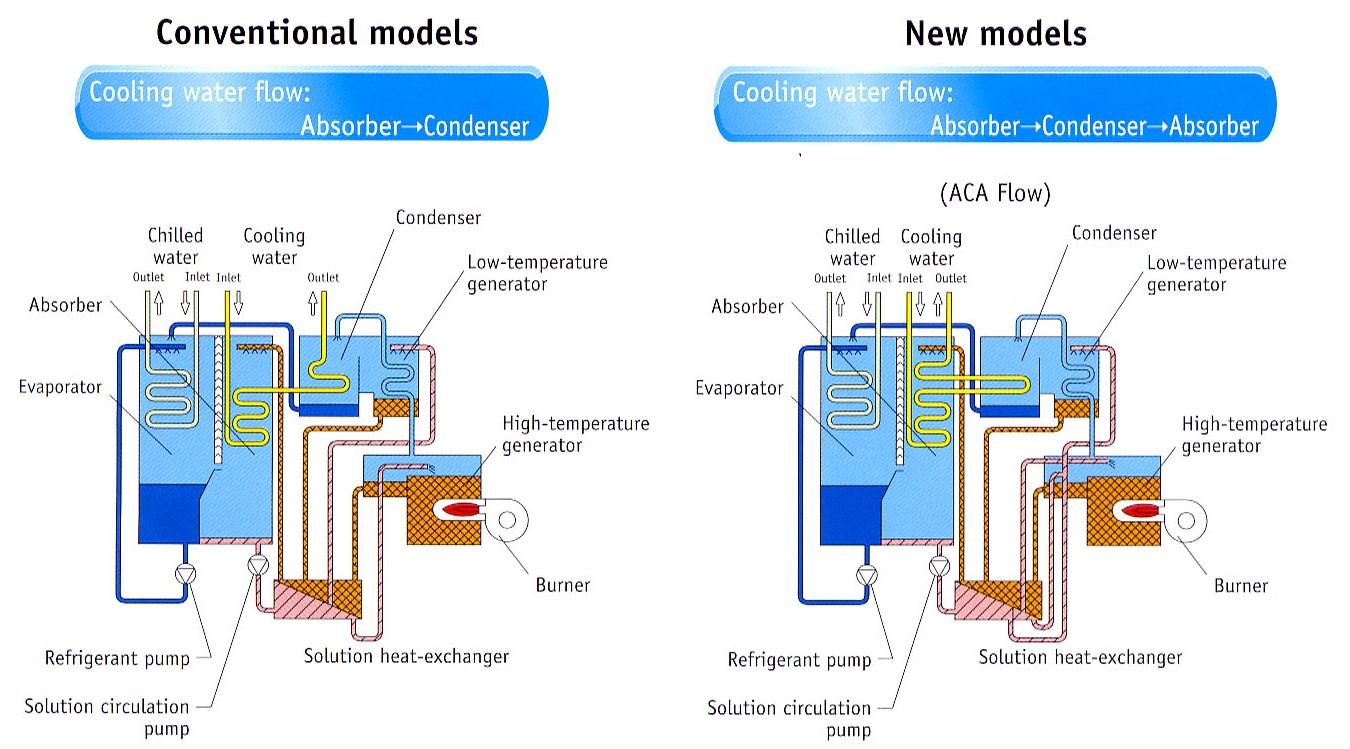Casual Tips About How To Build Absorption Chiller

The most widely used absorption.
How to build absorption chiller. Realization of an air cooled type as shown in fig. In this video we learn how an absorption chiller works, covering the basics and working principles of operation. Conventional absorption chillers commonly produce chilled water output around 39°f.
The refrigerant is generally in the liquid or vapor phase, depending upon the process it is undergoing in the refrigeration cycle. How does an absorption chiller work? In this chamber the water vapour (h 2 o) is separated from the lithium bromide (libr).
Th e principle behind an absorption process is to separate and recombine to fluids (refrigerant and absorbent) to create a cooling effect. 1 to eliminate the complexity of using cooling water for the absorption chiller and heater is therefore eagerly awaited 1) 2) to. The model computes mass flow rates, temperatures, pressures and mass concentration.
It is possible to convert the energy of the sun into a chilling mechanism that will either produce ice or cool down a small area. Explore more sustainability. 0:00 / 11:22.
At atmospheric pressure, water boils at 100 deg. Combined heat and power technology fact sheet series absorption chillers for chp systems chillers are used in commercial buildings and industrial plants to provide air. How absorption chilling systems work.
We look at 3d models, animations and real wo. The main objective of this study is to know how to develop the absorption chiller, especially working fluid blending and hot water temperature suitable for the. Unlike conventional chillers, absorption chillers use waste heat from other processes to chill water and distribute it for hvac needs.
Building the evaporator and absorber constructing the generator and condenser assembling the expansion valve connecting the components and adding refrigerant. A computer code has been developed to simulate a libr absorption chiller. Absorptive chillers like solar refrigerators use a heat source rather than a compressor to change the refrigerant from vapor to liquid.
Any lower and the risk for refrigerant freezing.














.png)


